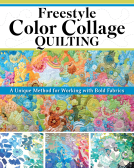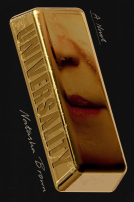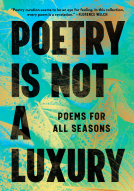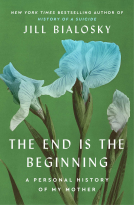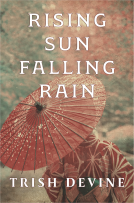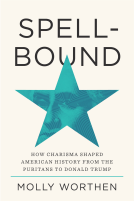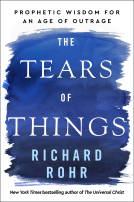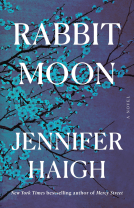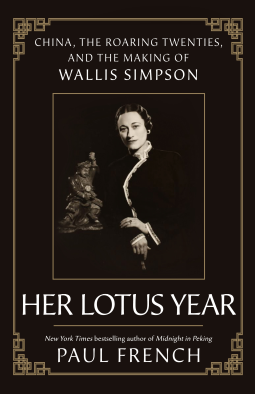
Her Lotus Year
China, the Roaring Twenties, and the Making of Wallis Simpson
by Paul French
This title was previously available on NetGalley and is now archived.
Send NetGalley books directly to your Kindle or Kindle app
1
To read on a Kindle or Kindle app, please add kindle@netgalley.com as an approved email address to receive files in your Amazon account. Click here for step-by-step instructions.
2
Also find your Kindle email address within your Amazon account, and enter it here.
Pub Date Nov 12 2024 | Archive Date Nov 26 2024
Description
New York Times bestselling author Paul French examines a controversial and revealing period in the early life of the legendary Wallis, Duchess of Windsor–her one year in China.
Before she was the Duchess of Windsor, Bessie Wallis Warfield was Mrs. Wallis Spencer, wife of Earl “Win” Spencer, a US Navy aviator. From humble beginnings in Baltimore, she rose to marry a man who gave up his throne for her. But what made Wallis Spencer, Navy Wife, the woman who could become the Duchess of Windsor? The answers lie in her one-year sojourn in China.
In her memoirs, Wallis described her time in China as her “Lotus Year,” referring to Homer’s Lotus Eaters, a group living in a state of dreamy forgetfulness, never to return home. Though faced with challenges, Wallis came to appreciate traditional Chinese aesthetics. China molded her in terms of her style and provided her with friendships that lasted a lifetime. But that “Lotus Year” would also later be used to damn her in the eyes of the British Establishment.
The British government’s supposed “China Dossier” of Wallis’s rumored amorous and immoral activities in the Far East was a damning concoction, portraying her as sordid, debauched, influenced by foreign agents, and unfit to marry a king. Instead, French, an award-winning China historian, reveals Wallis Warfield Spencer as a woman of tremendous courage who may have acted as a courier for the US government, undertaking dangerous undercover diplomatic missions in a China torn by civil war.
Her Lotus Year is an untold story in the colorful life of a woman too often maligned by history.
Available Editions
| EDITION | Other Format |
| ISBN | 9781250287472 |
| PRICE | $30.00 (USD) |
| PAGES | 320 |
Available on NetGalley
Featured Reviews
 Mike H, Reviewer
Mike H, Reviewer
Her Lotus Year : China, The Roaring Twenties and the Making of Wallis Simpson by Paul French
I know who Wallis Simpson was but I never had much interest in her life. I am a fan of Paul French and his writing on China. Now, having read this book I do have a bit more interest in Wallis Simpson and her later life. As the title states the “making of Wallis Simpson makes clear this year in China did indeed shape some aspects of her life later on.
Why was she in China? She was there to try to make a second attempt on her 1st marriage to a husband who was in the Navy stationed in Hong Kong and a mean drunk. It did not work and there she was stuck in China with very little money and only 27 years old.
Mr. French in great details tells the story of how she survives in Shanghai and Peking through fortunate friendships, love affairs and an eye for jade. Buy cheap, sell high.
The most interesting aspect of her year there was the very real possibility that she transported documents for the US military between Shanghai and Beijing. She was always met when she arrived by someone from the Embassy or the military who would set her up in the best hotel in time at no charge.
Even without the Simpson story, Mr. French who knows China well does a great job creating images of China in the roaring 20’s for the expats who lived there surrounded by the Japanese and Chinese bandits.
I heartily suggest this book for the Wallis fans and perhaps even more so to those interested in China in the 1920”s.
Was the Woman Who Led to a King’s Abdication a Chinese Agent?
A few references are made in this blurb that need clarification. The memoir cited was Wallis’ (1896-1986) The Heart Has Its Reasons (1956). The blurb semi-suggests that this book is an edition of her memoir, whereas it is instead a critical biography that is based on this memoir, comparing it to anti-Wallis propaganda. The abdication of King Edward VIII took place in 1936, or only 6 years after Muddock’s death in 1930; Muddock might have had an indirect influence on the monarchy that might have prevented this abdication if he was still alive, but his absence might have provided a void for foreign actors to manipulate events, after centuries of Britain’s monarchy sleeping, as the Workshop labored on controlling its press.
The “Introduction” explains that most of the accusations that Wallis had “learned in a low Chinese brothel” how to perform sexual favors to influence King Edward lacked any documented evidence to support them. For example, a dossier was mentioned that “did not exist”. Though the author does not clarify what contrary evidence exists, as he seems to instead be trusting the propagandistic view of Wallis’ side.
French narrates that in 1924, Wallis was 28 and took a US Navy transport ship to Hong Kong. Her husband was stationed in the military there, and so she eventually decided to join him to work on their marriage. He was abusive, so she divorced him, and then spent a year traveling across China. Where would she have had the funds for this travel without a divorce settlement? Then, she met the Prince of Wales in 1931, “becoming his mistress a few years later”. They had a relationship for 5 years until 1936 before their affair was publicized, when he became the king upon the death of his father King George V in January 1936. Edward abdicated on December 11, 1936. They were still unmarried during this announcement, and only got married on June 1937.
The center of the facts of what happened in China, after Wallis left her husband, begins to be reported in chapter “5: Twenty-Four Hours in Typhoid Town”. She reports that when she briefly stopped in Tientsin, there was “a local war… in progress, trains were being raided daily.” Between the typhoid and this little war: why didn’t she take the next US Navy ship back to the States? I spent 4 months in China before I was so sick I was forced to resign and return to the States. If she had the funds to live in China for a year, she must have had enough to travel back. What could have driven her to stay? She was traveling with an American friend and on the US SS Shuntien, so it should have been an easy exit. A description follows of warlords that were ruling this region, and adding additional risk to life. French proposes the theory that Wallis was there despite these risks because she was carrying “important documents on behalf of US naval intelligence”. Does that make sense? She arrived there on a Navy warship. All the navy crew on that ship would have been more suitable to deliver such documents, as opposed to a woman traveling as a tourist with a friend. And there is a note that she was not yet officially divorced. “There was certainly nothing else of interest in Tienstein—no friends, no shopping, no particular sights of interest… The city was frozen, diseased, and a potential powder keg of Chinese warlord violence” (104). The rest of this book attempts to prove this general argument of her being a US agent.
This book is dense with descriptions of places, politics, culture, people, and dramatic international incidents. I am not sure if Wallis or those who accused her were in the right, but I am sure that the evidence for either should be found in this well-researched book. Thus, I recommend it for casual readers, and for researchers of related subjects alike. And all types of libraries should include it in their collection, as it can be of spontaneous interest to their patrons.
--Pennsylvania Literary Journal, Summer 2024 issue
 Reviewer 1315847
Reviewer 1315847
In this masterful work of historical narrative, award-winning China historian Paul French takes readers on an enthralling expedition into the heart of 1920s Peking (now Beijing), as seen through the eyes of one of the 20th century's most intriguing figures: Wallis Simpson.
French's meticulous research and vivid storytelling bring to life a pivotal year in Simpson's life, one that would shape her into the woman who would later captivate King Edward VIII. "Her Lotus Year" offers a fresh perspective on Simpson, revealing a complex, adventurous woman far removed from her often-maligned public image.
The book's greatest strength lies in its rich portrayal of 1920s China. French expertly weaves the political and social landscape of the time into Simpson's personal journey. Readers will find themselves transported to a China in flux, caught between ancient traditions and modernizing influences, where warlords vied for power and the seeds of revolution were being sown.
French's depiction of Peking is particularly evocative. Through Simpson's eyes, we explore the city's labyrinthine hutongs, marvel at the grandeur of the Forbidden City, and experience the vibrant expat community's social whirl. The author's attention to detail brings the era to life, from the clatter of rickshaws on ancient streets to the aroma of exotic dishes at lavish banquets.
One of the book's most fascinating aspects is its exploration of cultural exchange. French documents Simpson's growing appreciation for Chinese aesthetics, her burgeoning expertise in jade, and her adventures in the city's curio shops and markets. These experiences, French argues, were instrumental in shaping Simpson's renowned sense of style and sophistication.
The narrative also touches on the broader geopolitical context of the time, hinting at Simpson's possible role as a courier for the U.S. government. While speculative, this adds an intriguing layer of intrigue to her time in China.
"Her Lotus Year" is more than just a biography; it's a window into a fascinating period of Chinese history and a nuanced exploration of cross-cultural experiences. French's work challenges readers to reconsider their preconceptions about Wallis Simpson, presenting her as a woman of courage, adaptability, and cultural curiosity.
This book offers a perfect blend of historical insight, cultural exploration, and personal narrative. French's engaging prose and eye for detail make "Her Lotus Year" a must-read for anyone interested in China's history, the expat experience, or the power of travel to shape individual lives.
In conclusion, "Her Lotus Year" is a triumph of historical writing, offering a fresh perspective on a misunderstood figure while painting a vivid portrait of a pivotal moment in Chinese history. It stands as a testament to the transformative power of cultural immersion and the enduring allure of China's ancient capital.
Paul French casts a wide net to gather interesting detail for HER LOTUS YEAR: CHINA, the ROARING TWENTIES and the MAKING of WALLIS SIMPSON. He would have to because there is no substantial new information about Simpson, just a careful examination of available material and a critical look at earlier sensationalized biographies. French dismisses the charges of the so-called “China Dossier” as malicious falsehoods designed to destroy her reputation and prevent any relationship with the future king. He also writes in support of the interesting claim that in the early days of her visit to China, she acted as a courier of intel documents as she traveled from place to place.
For anyone with a particular interest in Simpson, this book is a must-read. An important piece in the ongoing argument. Other readers will find a riveting account of this time period in China, particularly Hong Kong, Shanghai and Peking, as French draws from multiple sources, historians, novelists, poets. With neither interest, readers might struggle to engage.
With thanks to NetGalley and St. Martin’s Press for an ARC of this book in exchange for an honest review.
This was the book I have been waiting for. Wallace Simpson's time in Shanghai has been referred to as resulting in influences (good and bad) that lasted throughout her lifetime. Paul French's exhaustive research gives the reader a fascinating look at Simpson and her contemporaries during this turbulent time in her life. I was astonished by French's breadth of sources that he used to refute the many rumors and innuendo that had followed Simpson throughout her life and beyond. This book was enlightening and an absolute pleasure to read.
Readers who liked this book also liked:
Patti Callahan Henry
General Fiction (Adult), Historical Fiction, Women's Fiction







